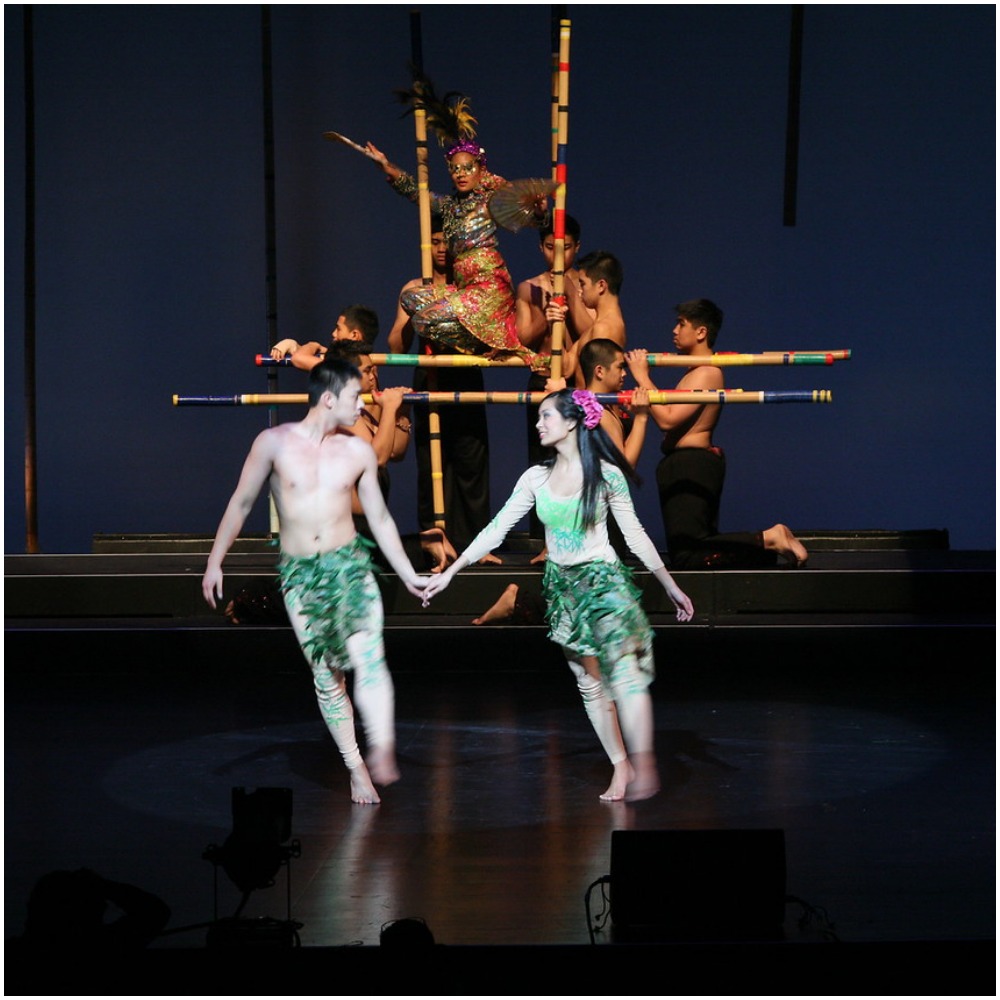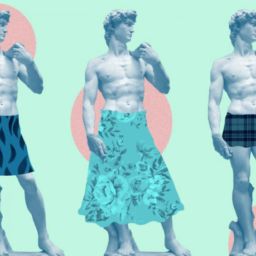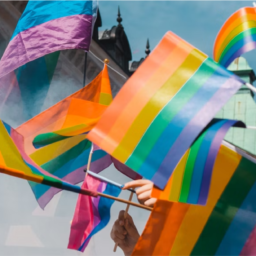
When you think of dancing, your mind may go to reality show contests, or to the Regency era ballroom dances that Bridgerton has popularized, or to Channing Tatum’s hip hop moves in Step Up. Either way, dance is and always will be a staple in everyone’s life.
Dancing is a form of artistic expression as well as sensual, evocative art. We can find dance in all aspects of culture; it reflects the society in which it exists. Around the world, dance has served for centuries as a form of cultural identity, religious enlightenment, and storytelling.
From the Native American Grass Dance to the whirling movements of the Waltz, journey with The HBM around the world as we explore different cultures through dance!
Tribal Dance
A tribal society is essentially a self-contained system. And while it may possess sophisticated cultural and social structures, its technological and economic structures are often traditional. Consequently, by the late 20th century, such societies had become increasingly rare, and many tribal dances had either died or become transformed.
Tribal dances, unlike most dance forms, are not necessarily the province of trained specialists, although sometimes they may be. Such dances may be participatory with no real distinction between dancer and spectator, and, while they may take place in special venues or on special occasions, they are often intimately related to the everyday life of the community.
The Grass Dance
Pictured: Native American man performing the Grass Dance Source: Native Science
The Grass Dance is one of the oldest-known tribal dances and is performed to pay respects to departed ancestors, as well as to ask Mother Earth for strength. The movements of the dance mimic the swaying of grass in a light breeze and often, the dancers wear headdresses and ribbons that sway in tune with their steps.
The Grass Dance originates from the Omaha-Ponca and Dakota Sioux tribes. According to legend, its original creator was a disabled child who wanted to dance but couldn’t on account of his injured legs. The boy consulted a medicine man, who instructed him to seek inspiration in a big, open field, inspiring him to create the Grass Dance.
Malakas at Maganda
Pictured: Filipino men and women performing Malakas at Maganda Source: SmugMug
Malakas at Maganda is a tribal dance from the Philippines. The dance interprets the Manobo folklore in which a weary bird perched on a large bamboo heard strange noises inside. It pecked the bamboo until it split open. From inside the bamboo came the first man, Malakas, and the first woman, Maganda.
During the dance, men bring out bamboo shoots and bow down to two dancers portraying the first humans. A group of women circle the men and dance joyously in a circle until all of the dancers sit down, awaiting the arrival of Malakas and Maganda.
Folk Dance
Folk dance is a form of dance developed by a group of people that reflects the traditional life of a certain country or region. It usually represents the dance forms of the common people as opposed to those from the upper classes. Folk dances may emerge spontaneously among groups of people or derive from previous styles.
The style of folk dances can be free-form or rigidly structured. Once established, folk dance steps are passed down through generations and rarely change. Usually associated with social activities, some dances are also performed competitively; and in some regions, folk dancing is even involved in cultural education.
The Bihu Dance
Pictured: Assamese women performing the Bihu dance Source: Utsavpedia
The Bihu dance is from the Indian state of Assam that’s related to the Bihu festival. Performed in a group, the Bihu dancers are usually young men and women, and the dancing style is characterized by brisk steps and rapid hand movements. The traditional costume of dancers is colorful and red, signifying joy and vigor.
The Bihu dance is a tradition that has always been very significant in the culture of Assam’s diverse ethnic groups. According to scholars, the Bihu dance has its origin in ancient fertility cults that were associated with increasing the fertility of the demographic and the land.
The Dragon Dance
Pictured: Chinese men and woman perform the Dragon Dance Source: iStock Photo
The Dragon Dance originated from the Han Dynasty (206 BC – 24 AD) and the tradition never faded. In Chinese culture, dragons are said to bring good luck; as a result, the dance was originally performed to please the ancestors and to plead for rain. In fact, during the festival, the longer the dragon is, the more luck it’ll instill.
The performance of the Dragon Dance is accompanied by the intense, mesmerizing rhythm of cymbals, gongs, and drums. The sound and the rhythm conduct the movement of an intricate dragon puppet. Performers hold poles to raise and lower the body, while lead dancers lift, dip, thrust, and sweep the dragon’s head.
Ballroom Dance
The origin of ballroom dance lies in the European court dances of the 17th and 18th centuries, although many of the dance steps were adapted from folk traditions. Initially, court dances were performed facing the throne because it was unacceptable to turn one’s back on a ruler; the dances eventually evolved with participants having a broader range of movement.
The tradition of ballroom dance was historically distinguished from folk or country dance by its association with the elite social classes and with invitational dance events. However, in the 21st century, ballroom dance is present in many parts of the world and has practitioners in virtually all segments of society.
The Waltz
Pictured: Couple performing the Waltz Source: The Victoria Ballroom Dance Society
The Waltz provides the origin of modern ballroom dance in that it moved it away from a group sequence of movement to the independent movement of a couple. Originating in southern Germany in the 17th century, the popularity of the Waltz grew with the music of Johann Strauss and exploded to great popularity in the 20th century.
The Waltz is known to be a romantic dance comprised of soft, round, flowing movements. It’s characterized by its rise and fall action and includes a step, slide, and step in three-fourths time. Dancers move their shoulders smoothly, parallel with the floor instead of up and down while striving to lengthen each step.
The Foxtrot
Pictured: Couple performing the Foxtrot Source: The Victoria Ballroom Dance Society
Although its creation is unclear with many claiming to have invented it, the Foxtrot became an instant hit and was originally danced to ragtime. From the late 1910s through the 1940s, the foxtrot was the most popular fast dance and the vast majority of records issued during these years were Foxtrots.
Defining characteristics of the Foxtrot include body contact at all times between partners and passing steps. The use of body contact makes it possible to execute very tight turns, which is further enhanced by the extensive use of heel turns. Dancers concentrate on creating an image of a smooth, gliding motion around the dance floor.
Latin and Hispanic Dance
Latin dance has a rich cultural history rooted in the traditional dances of the native peoples of Latin America. These dances were heavily influenced by European colonists and African slaves from as early as the 1500s, developing into the well-known styles of Latin dance we have today.
Latin dance originated in the traditional dances of Spain, South America, Central America, and the Caribbean. Like many cultures around the world, dance was performed during festivals and rituals as a symbolic representation of cultural beliefs. Traditional dances symbolized events, combat, and the movement of workers sowing and harvesting.
Flamenco
Pictured: Woman Flamenco dancing Source: Britannica
Flamenco dancing originated from the region of Andalusia 500 years ago, though it wasn’t given its name until the 18th century. Though it originated in the southern regions of Spain, Flamenco is thought to be influenced by many world cultures, including Latin American, Cuban, and Jewish traditions.
The dance’s energetic fusion of singing, guitar playing, dance, and handclaps has made it famous across the world. As Flamenco dancers perform, they express deep emotion by clapping their hands or kicking their feet, while some use small percussion handheld instruments called “castanets.”
Salsa
Pictured: Couple Salsa dancing Source: Hobby Lark
Salsa is a syncretic dance form with origins in Cuba as the meeting point of Spanish European and African cultures. Salsa is normally a partner dance, although there are recognized forms such as “Suelta” and “Rueda de Casino” where multiple couples exchange partners in a circle. Salsa can be improvised or performed with a set routine.
One of the most common steps of Salsa is the three weight changes, or steps, in each four-beat measure. Caught in the middle are the hips which end up moving quite a bit —- famously known as the “Cuban hip movement.” In LA and New York’s Salsa styles, the dancers switch places, while in Latin American styles, the dancers circle around each other.
Performing Dance
Also known as theater dance, performance dance is usually choreographed and performed to set music for an audience. It was first introduced in the early years of the Italian Renaissance when music, dance, arts, and poetry started to rise in popularity.
Refined by the efforts of France and Russia, ballet became the premier performing dance and is considered one of the most complicated and most admired dances of all time. However, more recently, many other professional dances have come onto the scene that also take great amounts of discipline and pure passion.
Ballet
Pictured: Woman performing ballet Source: Guim
In the 1600s, ballet began as an elaborate aristocratic entertainment in Italy and France, where it was performed by mostly men in the halls of palaces. Combining dance, music, and song, the earliest ballets were enactments of events from mythology, heavy on gods and heroes, and featuring wildly fantastical costumes and masks.
By the late 19th century, ballet had cheerfully given itself over to popular culture with more free forms of expression influenced by nature and spirituality. Today, dancers are expected to perform a wider range of movements and dance styles.
Contemporary Dance
Pictured: Women performing a contemporary dance Source: City Academy
Contemporary dance is a style of interpretive dance that embraces innovation, blending techniques from various genres. This dance, which focuses more on floor work over leg work and pointe, isn’t restricted by the rules that govern traditional dance forms. Instead, it relies on improvisation and is characterized by freedom of movement and fluidity.
Contemporary dance is sometimes considered a form of storytelling with dancers using the medium to portray characters or convey personal stories. Its routines may also communicate abstract ideas, such as ethical values, acceptance of self, and timely social issues. Costumes typically reflect the tone of the accompanying music and dancers often perform with bare feet.
Hip Hop Dance
Hip-hop dance began in New York City in the late 1960s and was inspired by the movements of African dancing. It flourished as a new style of dance performed on the street, combining aspects of modern dance, tap, and swing. It’s most commonly performed to hip-hop music and includes a variety of freestyle movements and acrobatics.
Hip-hop dance has truly transformed the world of dance with many of its distinctive moves being integrated into the choreography of more traditional styles of dance. It’s even worked its way into major theatrical and cinematic productions.
Breakdance
Pictured: Man breakdancing Source: Olympics
Breakdancing is a unique culture with its own history, lingo, and vast assortment of dance moves. It’s a form of street dance that incorporates intricate body movements, coordination, style, and aesthetics. The people who breakdance are known as b-boys or b-girls, or sometimes as breakers.
Breakdance is the oldest known hip-hop style of dance and is believed to have originated in the Bronx, New York, in the 1970s. Breakdancing really started to take off in 1980, when it was adopted by popular artists like Michael Jackson. Today, though, breakdance has influenced many modern forms of dance and you’ll often see it in music videos.
Locking and Popping
Pictured: Man doing different popping and locking moves Source: Youtube
Hip-hop dance is incredibly diverse, and one of its famous variations is locking. This style of hip-hop dance sees the dancer suddenly stop and hold the position, or get locked, in the middle of dance routines, and then suddenly resume the dance. It requires full-body motion, but most of the dance is focused on the top half of the body.
Another popular hip-hop dance style is popping, which requires dancers to master the contracting and relaxing of muscles that create the feeling of a jerk throughout the body. This jerk is referred to as “pop” or “hit” and can be used to create dance routines and movements.
The Era of TikTok Dance
While plenty of professional dancers showcase their hard-earned skills on TikTok, the app has become known as a safe space where dance is for everyone. Dancing on the app is about having fun and creating a dance that’s a melting pot of genres.
There’s no doubt that you’ve come across a video or five of users dancing to Megan Thee Stallion’s “Savage” and Doja Cat’s “Say So”. Needless to say, there are new dances constantly being added and used in different contexts; it’s about taking a trend and making it your own.
However, scientists believe imitation functions through a system of mirror neurons which are thought to exist in the brains of all primates. As we watch another person perform an action, mirror neurons fire throughout the motor cortex to map that movement onto our own bodies, which explains why TikTok dances are so, dare I say, viral.
Activities involving synchronized movement can generate powerful feelings of unity. While the dancers on TikTok are separated through time and space, they create solidarity and positive feelings by moving together, mediated by the structure of the platform.
Here are a few of the most popular dances to come from TikTok:
Renegade
By far the most popular dance on TikTok, with more than 29.7 million users attempting the fast-paced choreography, is the Renegade. The original dance was created by Atlanta-based 14-year-old Jalaiah Harmon in September 2019, and quickly blew up with users all over the world.
Cannibal
Kesha’s 2010 song “Cannibal” is suddenly making a comeback thanks to 14-year-old Briana Hantsch from Illinois. She created a TikTok in February of herself dancing to the song in her bedroom which has more than 52,000 likes and has already been attempted by more than 9 million users, including some of the most viral TikTok stars like D’Amelio and Addison Rae.
Fancy Like
This dance, like the song by Walker Hayes, is all about making the best of what you’ve got. The Fancy Like dance has been trending since 2021, but it even made the jump from TikTok to TV when the restaurant chain Applebees used videos from the app for their commercials.
The HBM Wants to Know Why You Dance
Dancing can lead us into a trance and can put us completely in the moment. Some dances are spiritual, some are cultural, some are purely for fun and enjoying the moment, but the results are always the same: a raised level of energy and vibrations.
Dance connects us to the musical rhythms of life. Having been a part of our human culture for many millennia, it could be argued that it’s part of our cultural DNA. So dance with others, dance by yourself, dance to the music, dance because it’s a blast, and dance to immerse yourself into culture.
Do you have a favorite dance? Is your heritage represented by a specific style of dance? Let us know in the comments!
































